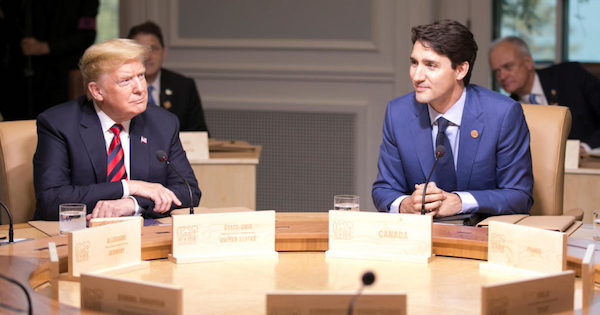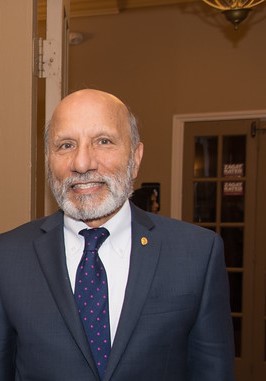

“By far, the biggest contributor to its export income has been the USA. Seventy-five percent of its exports are to America. Because of this enormity of its exports to America that bring in many billion dollars into the Canadian economy (about $50 billion just for selling cars to the USA), if American exports are interrupted, Canada will face huge economic and social problems. That is why, it is understandable that Canada is going to fight tooth and nail to keep its exports to America going unhindered, while not importing goods to protect its local producers and to preserve its cash. Ironically, American political and business leaders, because of Canada’s influence on American politics and business, want the status-quo to continue”.
Watching the currently going US-Canadian trade talks will make anyone understand why no US president in decades, spanning both political parties, dared to get into renegotiating America’s trade deals that had been sealed and practiced for so, so long ago, even though unfair.
The deal with Canada, or NAFTA on a broader scale, is not an isolated case of a trade deal that is unfair to America. Almost all American trade deals are unfair, and that is why, American Presidents decided to stay away from them. They knew that the reopened trade talks will open tough issues that had been so negotiated that America had to open its borders to the other country such that it could export to America unabated, whatever and how much it wanted to export. However, when it came to importing from America, the other country, according to the deal, could engage in protectionism in whatever form it wanted. Take, for example, Canada’s imposition of a 300% tariff on all dairy products imported from America. And America tolerated this. In essence, basically, America always became the only free market in every deal. There was no laterality.
Through the kind of trade deals described above, for the last more than seventy years, America has made the whole world wealthy, whether it had been the countries in Asia, Europe, or North America, including Germany, Japan, China, South Korea, Canada, and Mexico, to name just a few. The trade agreements that they signed legitimized the unfair trade practices against the USA. The outcome had been a constant outflow of wealth from the United States to other countries. Consequently, during the ensuing decades, America fell from holding the top position in almost every measurable economic or social indicator to the bottom of its heap. And, the previously named are the countries among those that replaced America. Since it had been going on for so long, these nations had gotten used to exporting to America to earn cash to pay for imports for their needs from other countries who sold them at the lower prices, or they did it to fulfill their obligations of the deals they signed with the other countries who traded with them. They treated their trade deal with the USA as an entitlement. Because of the effort needed to conduct these negotiations afresh, and the low probability of an outcome that would satisfy the populations involved had the American presidents maintain their status-quo.
Let us, again, take the case of Canada. By rank, it is the 38th country in the world by population size, but 10th when it comes to exports, making it a very powerful, global exporter. Until 2007, it was America’s largest trading partner (lost that position to China). By far, the biggest contributor to its export income has been the USA. Seventy-five percent of its exports are to America. Because of this enormity of its exports to America that bring in many billion dollars into the Canadian economy (about $50 billion just for selling cars to the USA), if American exports are interrupted, Canada will face huge economic and social problems. That is why, it is understandable that Canada is going to fight tooth and nail to keep its exports to America going unhindered, while not importing goods to protect its local producers and to preserve its cash. Ironically, American political and business leaders, because of Canada’s influence on American politics and business, want the status-quo to continue.
Now, let’s take the other side of Canadian foreign trade. While America takes in 75% of Canadian exports, America is not Canada’s largest trading partner. No surprise, it is China. And, do not wonder; that is the case in almost all America’s trading partners. That is how, America did not have well-paying jobs for its population, and had to fund its budgets by taking loans, mostly from its trading partners.
The above given analysis provides us enough to accept that, in spite of exporting so much to America, mostly America’s trading partners do not import enough from the US to help balance the bilateral trade. Each of these countries uses its export dollars earned from America to buy more from China, European Union and other countries, leaving for America an annual trade deficit that was $566 billion in 2017. This is the problem that the Trump Administration is attempting to rectify through these, so called, the new NAFTA negotiations. The situation is exactly the same when we look at almost all of America’s major trade deals. The toughest and the largest one of them all is the trade deals with China. And only Trump has the understanding, desire and the stamina to take on these trade fights, simultaneously, to halt the outflow of these many, many billion American dollars every year that we could use to bring back to the top of the global ranks the standard-of-living and quality-of-life of our population.
(The Author is Business Professor at Seton Hall University. His areas of expertise are strategy, knowledge, and operations. He can be reached at AD.Amar@shu.edu; Tel: (973) 761 9684)





Be the first to comment